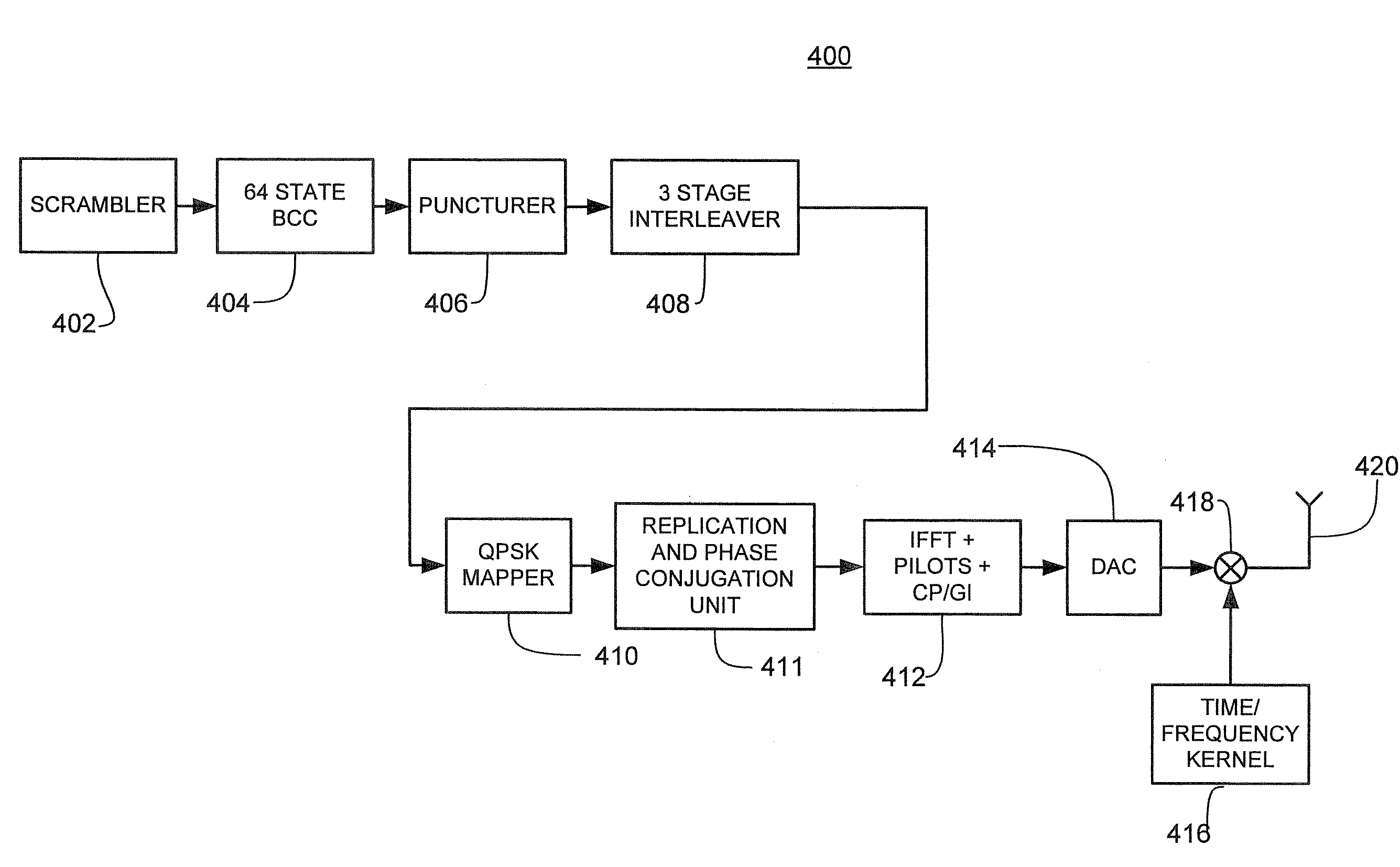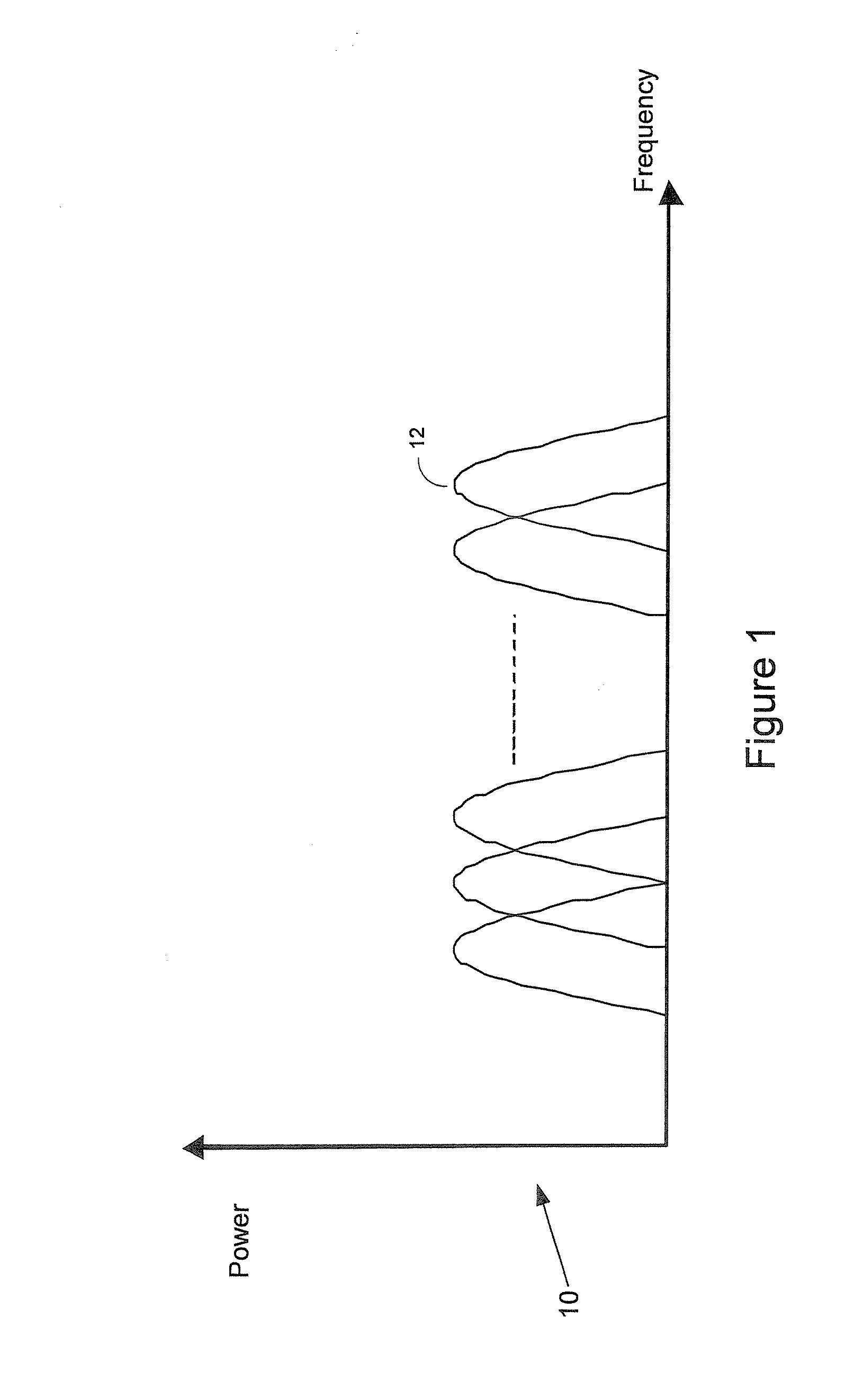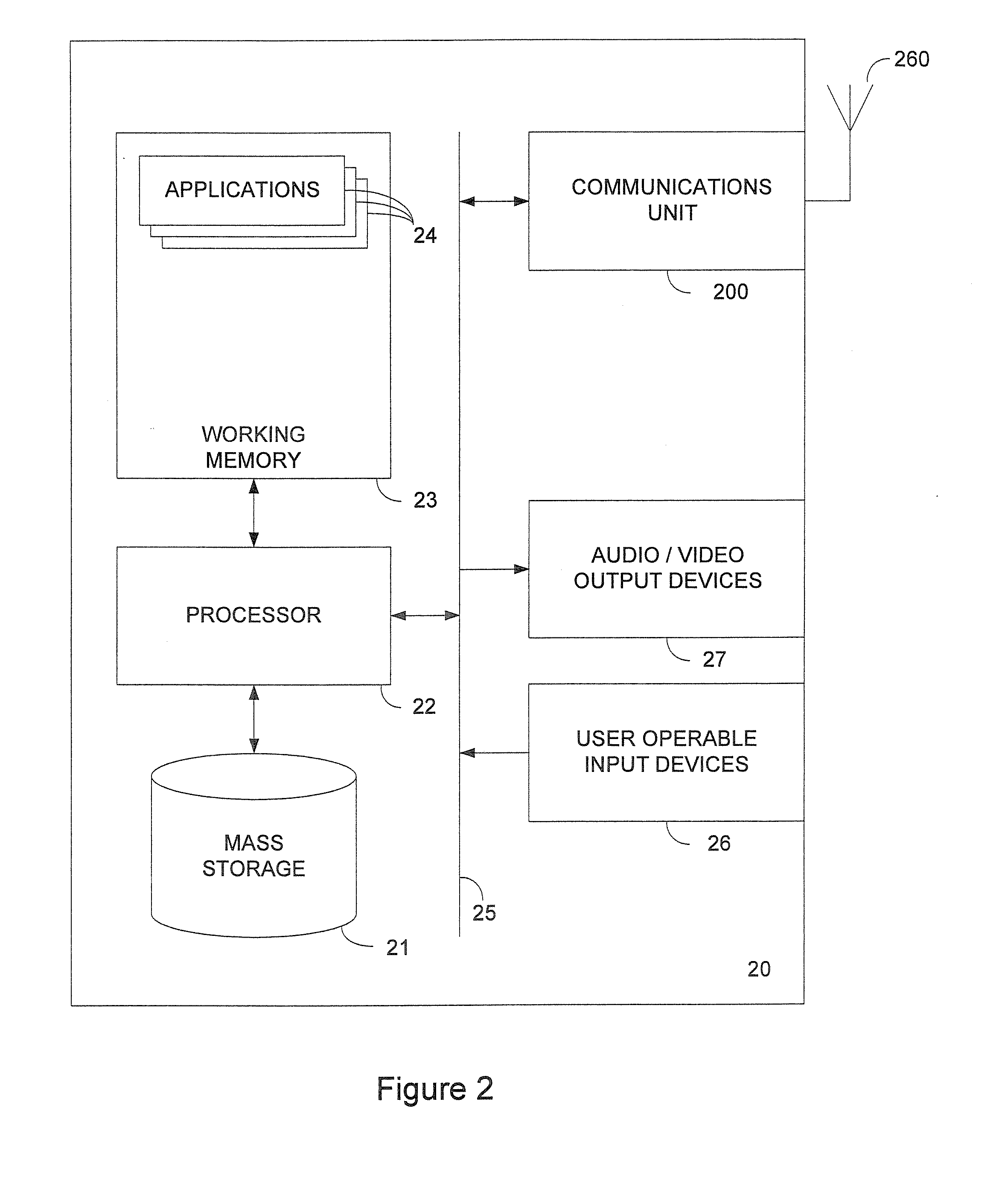Methods for data transmission
a data transmission and data technology, applied in the field of apparatus and methods for data transmission in orthogonal frequency division multiplexed (ofdm) communication systems, to achieve the effect of reducing the papr of the transmitted ofdm signal
- Summary
- Abstract
- Description
- Claims
- Application Information
AI Technical Summary
Benefits of technology
Problems solved by technology
Method used
Image
Examples
Embodiment Construction
[0061]Specific embodiments of the present invention will be described in further detail on the basis of the attached diagrams. It will be appreciated that this is by way of example only, and should not be viewed as presenting any limitation on the scope of protection sought.
[0062]A method and apparatus for data transmission in an OFDM system is disclosed. In the following description, a number of specific details are presented in order to provide a thorough understanding of embodiments of the present invention. It will be apparent, however, to a person skilled in the art that these specific details need not be employed to practice the present invention.
[0063]FIG. 2 illustrates schematically a laptop computer device 20 providing an example of background to the invention. The laptop 20 comprises a processor 22 operable to execute machine code instructions stored in a working memory 23 and / or retrievable from a mass storage device 21. By means of a general-purpose bus 25, user operable...
PUM
 Login to View More
Login to View More Abstract
Description
Claims
Application Information
 Login to View More
Login to View More - R&D
- Intellectual Property
- Life Sciences
- Materials
- Tech Scout
- Unparalleled Data Quality
- Higher Quality Content
- 60% Fewer Hallucinations
Browse by: Latest US Patents, China's latest patents, Technical Efficacy Thesaurus, Application Domain, Technology Topic, Popular Technical Reports.
© 2025 PatSnap. All rights reserved.Legal|Privacy policy|Modern Slavery Act Transparency Statement|Sitemap|About US| Contact US: help@patsnap.com



